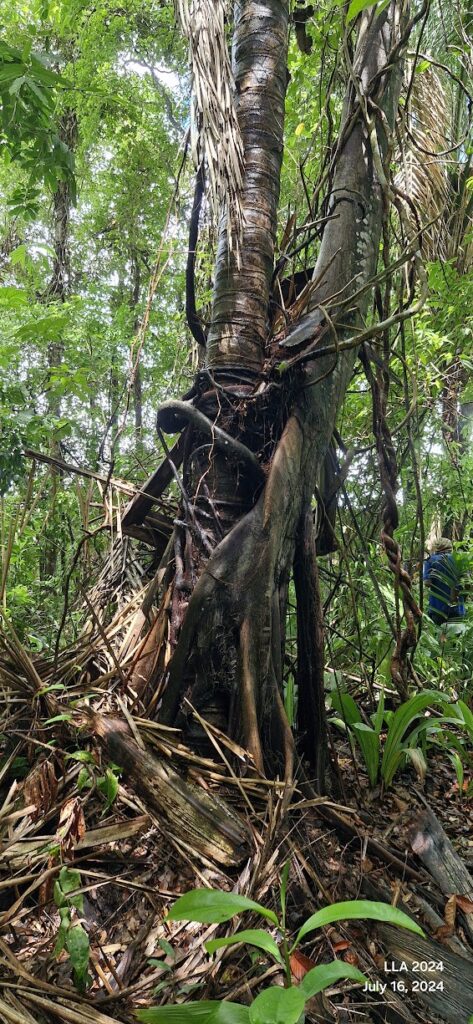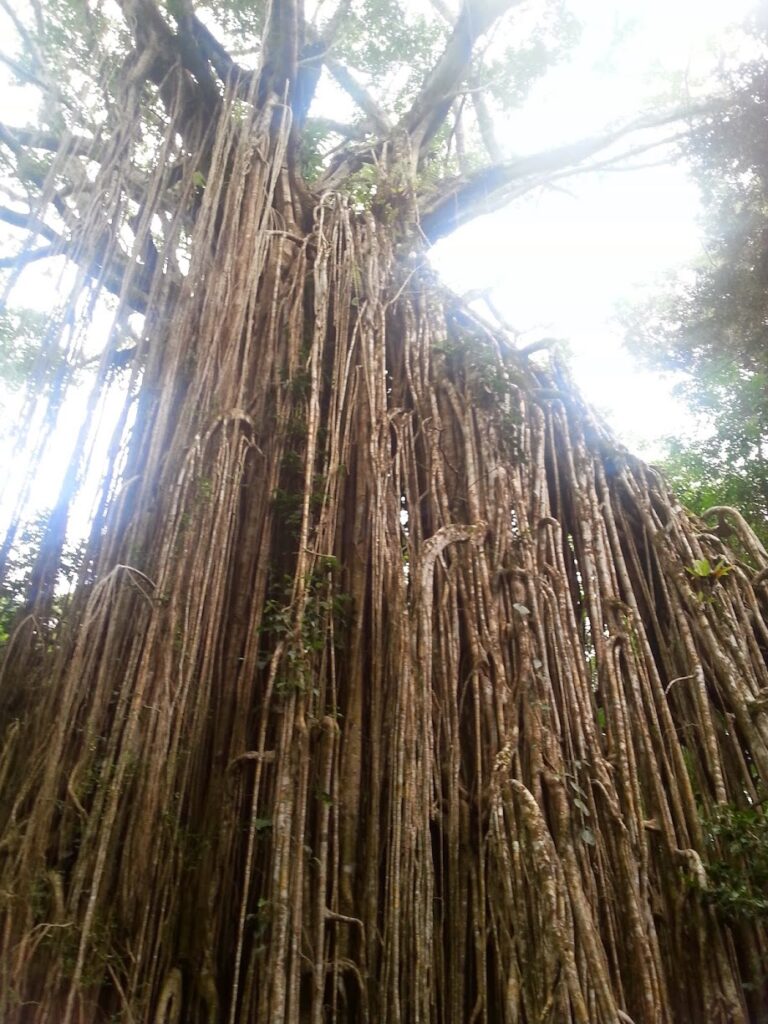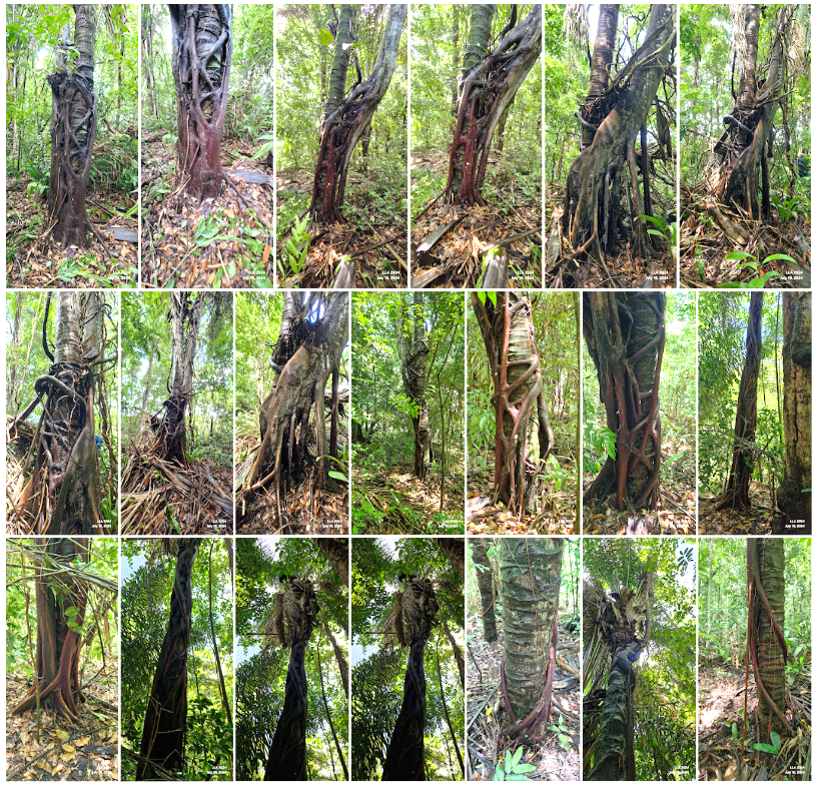A strange phenomenon unfolded during my recent visit to Cleaver Woods Recreational Park, a Natural Heritage Site in Arima, Trinidad, while collecting data with my MSc student. Here, the team encountered a Cocorite Palm (Attalea maripa) and a Strangler Fig (Ficus nymphaeifolia) seemingly coexisting. At first, we wondered which species’ DBH should we record, but then we realized that both the Cocorite Palm and the Strangler Fig were intertwined, making separate measurements difficult. Whenever the trunk of each species was separated and accessible, we took individual measurements. However, for intertwined trunks, we took multiple measurements at different points around the combined trunk to estimate an average DBH for the more dominant species.

This unlikely partnership appears to be commensalistic, where the Strangler Fig benefits by gaining access to sunlight through the palm’s height, while the Cocorite Palm derives neither benefit nor detriment from the initial association. However, this seemingly peaceful arrangement masks a race for survival.
Currently, the two trees co-exist, each occupying a niche. The Strangler Fig prioritizes vertical growth to reach the sunlight. Once its crown breaches the canopy and gains unrestricted sunlight, it will shift its focus to horizontal growth, ultimately engulfing the palm’s crown.
While the Cocorite Palm might appear to be tolerating its neighbour for now, this tolerance comes at a cost. The Strangler Fig’s eventual dominance is inevitable, leading to the palm’s demise within the coming decades. This fate awaits many Cocorite Palms as they are gradually replaced by their hemiepiphytic strangler fig companions.


Palm vs. Fig: Over time, Strangler Figs will outcompete Cocorite Palms. Researchers at the Cleaver Woods Recreational Park can take the opportunity to document the different stages of this phenomenon and utilize the information in their educational programmes.